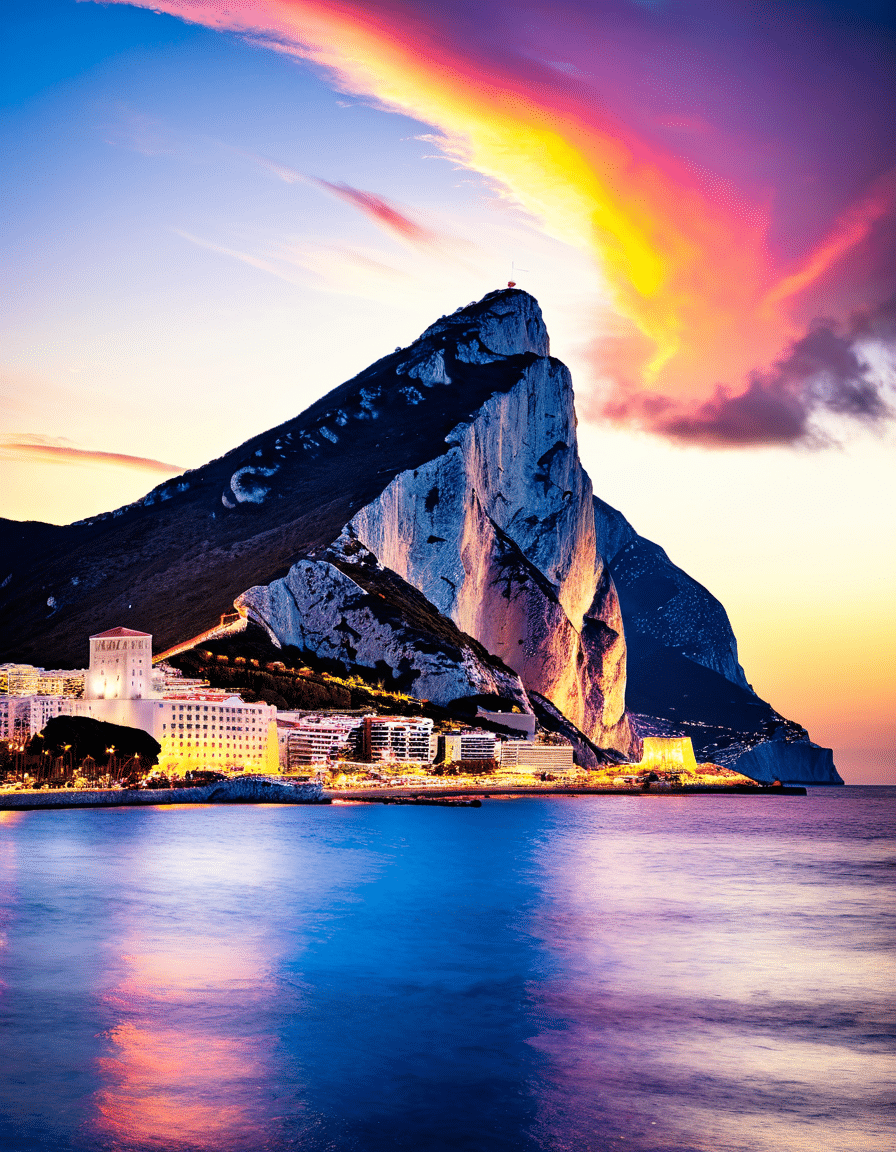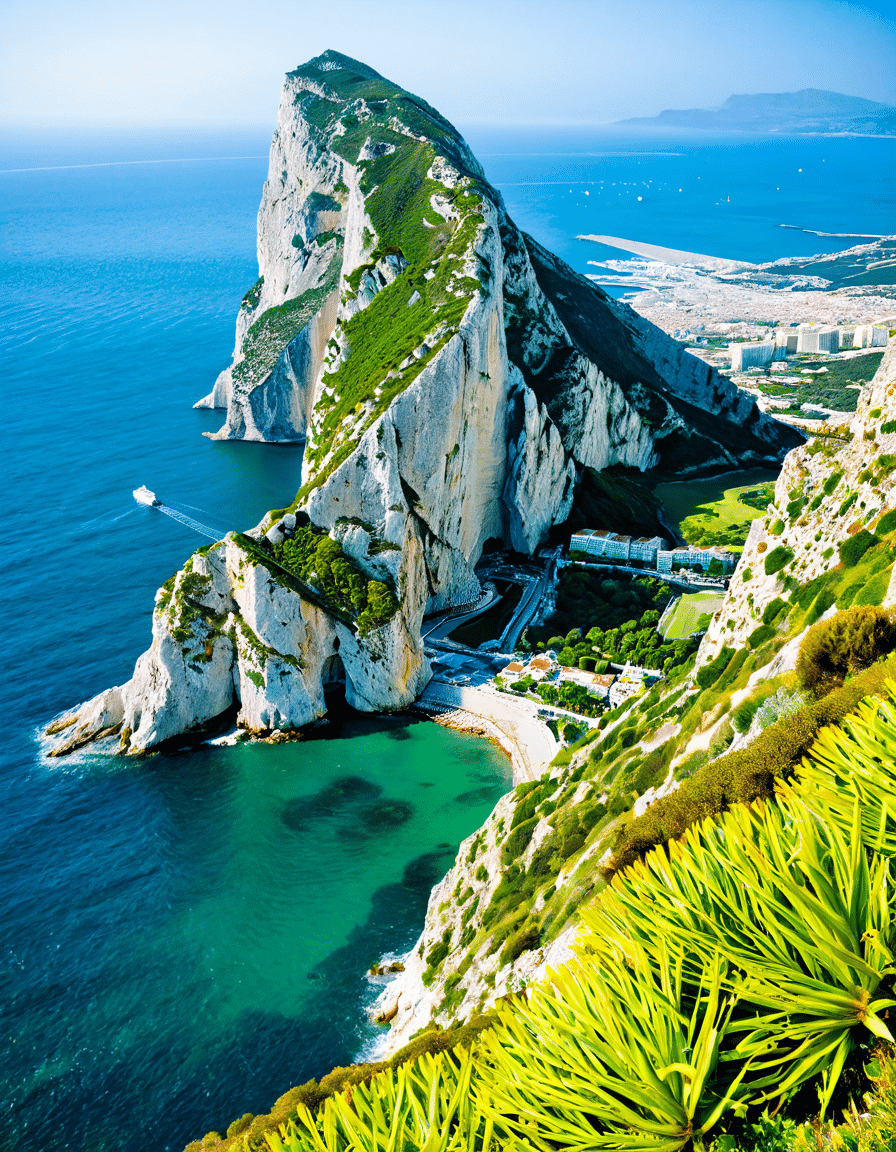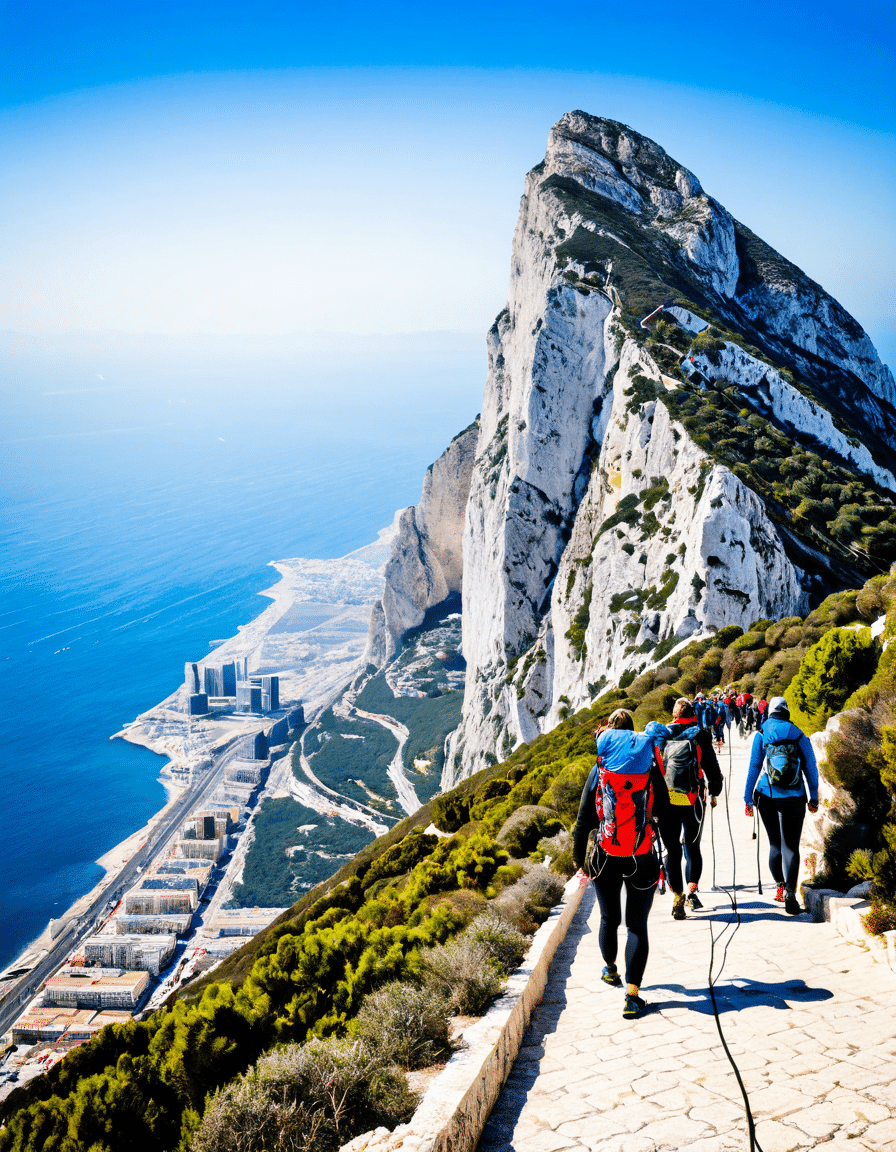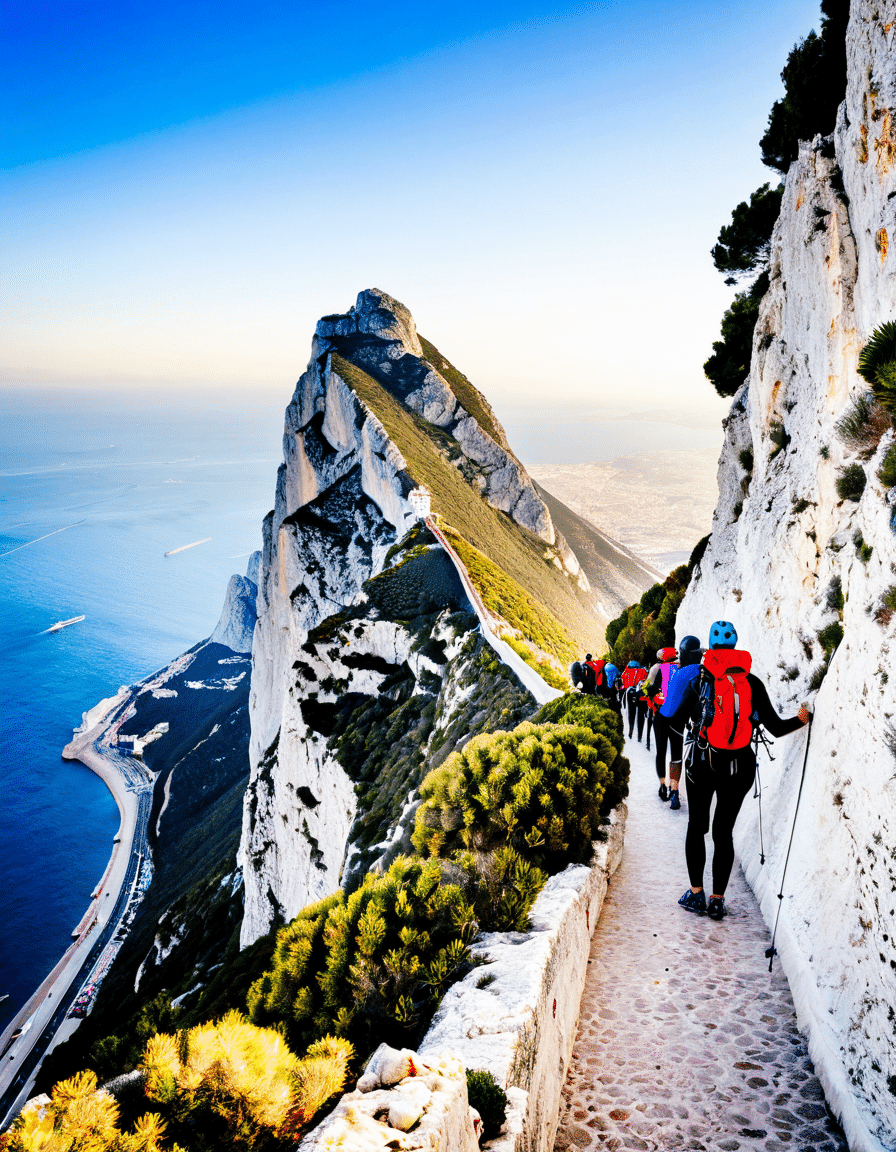
Rock Of Gibraltar Is A Majestic Landmark Of History
The Rock of Gibraltar stands out as a majestic landmark, not merely for its breathtaking views, but also for its profound historical and cultural significance. This towering limestone monolith, piercing the skies at the gateway to the Mediterranean Sea, has proven invaluable to countries navigating military and diplomatic waters. Throughout history, the Rock of Gibraltar has been a pivotal stage for numerous conflicts and treaties, shaping not only the fate of nations but also the lives of those who call this area home.

The Geo-Political Significance of the Rock of Gibraltar
The strategic importance of the Rock of Gibraltar can’t be overstated. Situated at the crossroads of Europe and Africa, it has historically been a crucial naval base. In the early 18th century, Britain seized control during the War of the Spanish Succession, marking a new chapter in Gibraltar’s storied past. The infamous Great Siege of Gibraltar (1779-1783) highlighted its significance to British military might, as it became a potent symbol of their resilience against Spain.
Historical Conflicts and Treaties
From its inception as a British territory, Gibraltar’s status has been a hot topic for negotiations. The pivotal Treaty of Utrecht (1713) granted Gibraltar to Great Britain, but tensions have simmered ever since. In modern times, debates continue to revolve around its contested status, representing a unique case in international law. Such treaties, pivotal in shaping Gibraltar’s fate, emphasize its importance in diplomatic discussions between Britain and Spain.
Conflicts over Gibraltar have shaped national pride and identity. The local population, known as Gibraltarians, have embraced a sense of ownership over this storied land, often leading to fierce debates surrounding sovereignty and self-determination. The Rock of Gibraltar remains a testament to resilience amid turbulent historical waters.

The Natural Wonders of the Rock of Gibraltar
Though steeped in history, the Rock of Gibraltar also dazzles through its natural wonders, recognized as a UNESCO Biosphere Reserve for good reason. Towering over the surrounding landscape, this limestone peak showcases unique biodiversity and geological wonders. The panoramic views from the summit offer breathtaking vistas that leave visitors spellbound, making recreation and exploration here a must for tourists.
Diverse Flora and Fauna
Home to over 600 species of plants, the Rock houses several endemic species that thrive within its diverse ecosystems. Among its fascinating wildlife, the Barbary macaque, the only wild monkey population in Europe, holds the spotlight. These cheeky monkeys have become a quintessential part of Gibraltar’s identity, drawing curious visitors eager for a glimpse of their playful antics.
Tourists flock to see these memorable creatures, intermingling with Gibraltar’s storied past. The rich biodiversity, combined with stunning views of the Mediterranean, weaves an enchanting tapestry that captures the hearts of nature lovers and historians alike. Every trail and overlook tells a story, inviting exploration and connection with the environment.
Culture and Heritage: Gibraltarian Identity
Gibraltar’s culture is a vibrant mix of influences, reflecting centuries of varied rule and exchange. From the Moors to the British, this mingling of cultures has created a unique Gibraltarian identity that permeates through language, architecture, and cuisine. Whether it’s in the streets or the plate, every corner of Gibraltar tells a tale.
Architectural Landmarks
Walking through Gibraltar feels like a journey through time, with landmarks like the Moorish Castle and St. Michael’s Cave narrating its storied past. The Moorish Castle has stood since the 8th century, serving as a stronghold for various rulers. Meanwhile, St. Michael’s Cave enchants visitors with its stunning stalactite formations and storied legends, drawing a crowd appreciative of both beauty and history.
This blend of architectural styles forms a narrative tapestry, showcasing resilience through artistry and culture. Each building reverberates with stories of cultural exchange, emphasizing the importance of understanding this diverse heritage while celebrating the resilience of Gibraltarians.
Language and Cuisine
The daily vernacular, known as Llanito, is a blend of English, Spanish, and Mediterranean dialects, underscoring Gibraltar’s multicultural roots. Local cuisine reflects this melding pot, with dishes like calentita and classic fish and chips forming a delightful culinary landscape.
This culinary medley provides more than nourishment; it connects generations through shared meals and traditions. The food is emblematic of a Gibraltarian pride that welcomes outsiders with open arms, while staying true to the flavors that tell its historic journey. As new influences merge with tradition, Gibraltar becomes a crossroads of cultural expression.
The Tourism Impact of the Rock of Gibraltar
In modern times, the Rock of Gibraltar has emerged as a tourism hotspot, attracting roughly 12 million visitors each year. This influx generates significant economic buzz, centering around its rich tapestry of historical sites, stunning natural scenery, and delightful wildlife encounters. The tourist economy allows generations to thrive in this timeless landmark while spreading awareness of its cultural narrative.
Key Attractions for Tourists
Visitors flock to numerous attractions, each offering a taste of Gibraltar’s charm. The Great Siege Tunnels—a remarkable feat of engineering—allow tourists to walk through the very history that shaped the Rock. Meanwhile, the Apes’ Den serves as a thrilling meeting point where tourists and local wildlife interact in harmonious unison.
Gibraltar’s various cultural events, such as the Gibraltar Music Festival, celebrate this identity, showcasing local talent while inviting visitors to partake in the experience. Local fairs not only bolster tourism but also highlight the community’s rich heritage, allowing Gibraltarians to share their story with the world.
Environmental Concerns and Conservation Efforts at the Rock of Gibraltar
Despite its allure as a tourist destination, the rising numbers of visitors have spurred concerns over the Rock of Gibraltar’s delicate ecosystems. As conservation efforts ramp up, the important task of balancing tourism with environmental integrity has become paramount.
Initiatives and Challenges
Organizations and local authorities are actively engaging in sustainable tourism practices, focusing on visitor management and habitat conservation programs. This includes limiting certain visitor numbers to sensitive sites and promoting eco-friendly practices among tourists.
However, challenges such as pollution and habitat loss continue to threaten the Rock’s environmental future. Each decision made has lasting implications for the unique ecosystems that call Gibraltar home. It’s crucial for both locals and visitors to work together to protect this treasured landmark while enjoying its many wonders.
Final Thoughts on the Rock of Gibraltar’s Legacy
The Rock of Gibraltar is more than just a geographical marvel; it embodies centuries of struggle, triumph, and cultural intersection. Its layered history and vibrant present prompt a sincere appreciation of everything it represents. By recognizing both its rich past and dynamic present, we cultivate a deeper understanding of this majestic landmark.
As a living embodiment of resilience and natural beauty, the Rock of Gibraltar calls on us to safeguard its legacy for future generations. It stands not just as a place on a map but as an enduring symbol of cultural richness and environmental importance, linking us all through stories of history, culture, and ecology.
Rock of Gibraltar: A Majestic Landmark of History
Little-Known Facts About the Rock of Gibraltar
Did you know the Rock of Gibraltar is more than a stunning piece of geography? It’s a thriving symbol of history and culture! Standing at about 426 meters tall, this limestone monolith has been a key point of defense for centuries. Interestingly, its strategic position was crucial during the Second World War, acting as a pivotal military base. This makes you think about all the stories buried within its steep cliffs. Just like Jean Hagen, who carved her own tale into Hollywood history, the Rock has seen its fair share of drama and intrigue.
One of the fascinating features of the Rock of Gibraltar is its population of Barbary macaques. These cheeky monkeys are the only wild monkeys in Europe! They’re a hit with tourists who come to take selfies with these furry fellows. Speaking of iconic moments, ever heard of the tale of Gypsy Rose Blanchard? Much like how her story unfolded with surprising twists, the legends around the Rock of Gibraltar continue to reveal layers of historical significance. Additionally, just over 30% of the Rock is protected as a nature reserve, showcasing rich biodiversity, a bit like toe Separators that help keep your feet in line—who knew nature could fit into even the quirkiest of comparisons?
Rock of Gibraltar in Popular Culture
The Rock of Gibraltar hasn’t just sat in history books; it’s made its mark in the film and music world too! Various filmmakers have tried to capture its beauty, prompting admiration akin to what we see in Roberto Rossellinis works. Moreover, its prominence has been echoed in popular songs, perhaps not as unmistakably as ABBA’s “Dancing Queen, but it holds its own allure. The Rock stands tall, much like the legacy of Dan Aykroyd Movies that continue to be loved by audiences around the globe.
In sports, Gibraltar also enjoys a peculiar position, especially in basketball where legends like Dražen Petrović are celebrated. The unique blend of culture, history, and the picturesque view of the Rock makes it a space that intrigues not just tourists, but also sports fans and film buffs alike. So, the next time you think about beautiful landmarks, remember the Rock of Gibraltar! It’s more than a breathtaking sight; it’s a testament to human history, much like how Eva Marie has made her mark in the world of wrestling.










